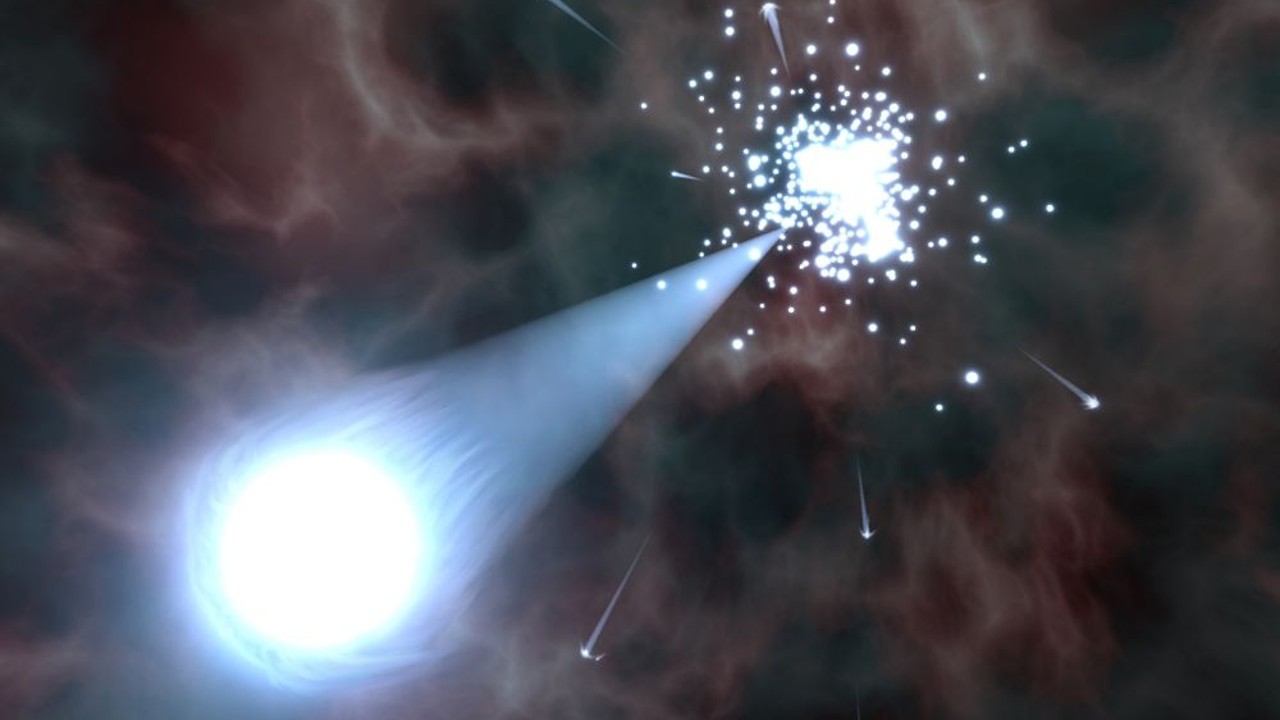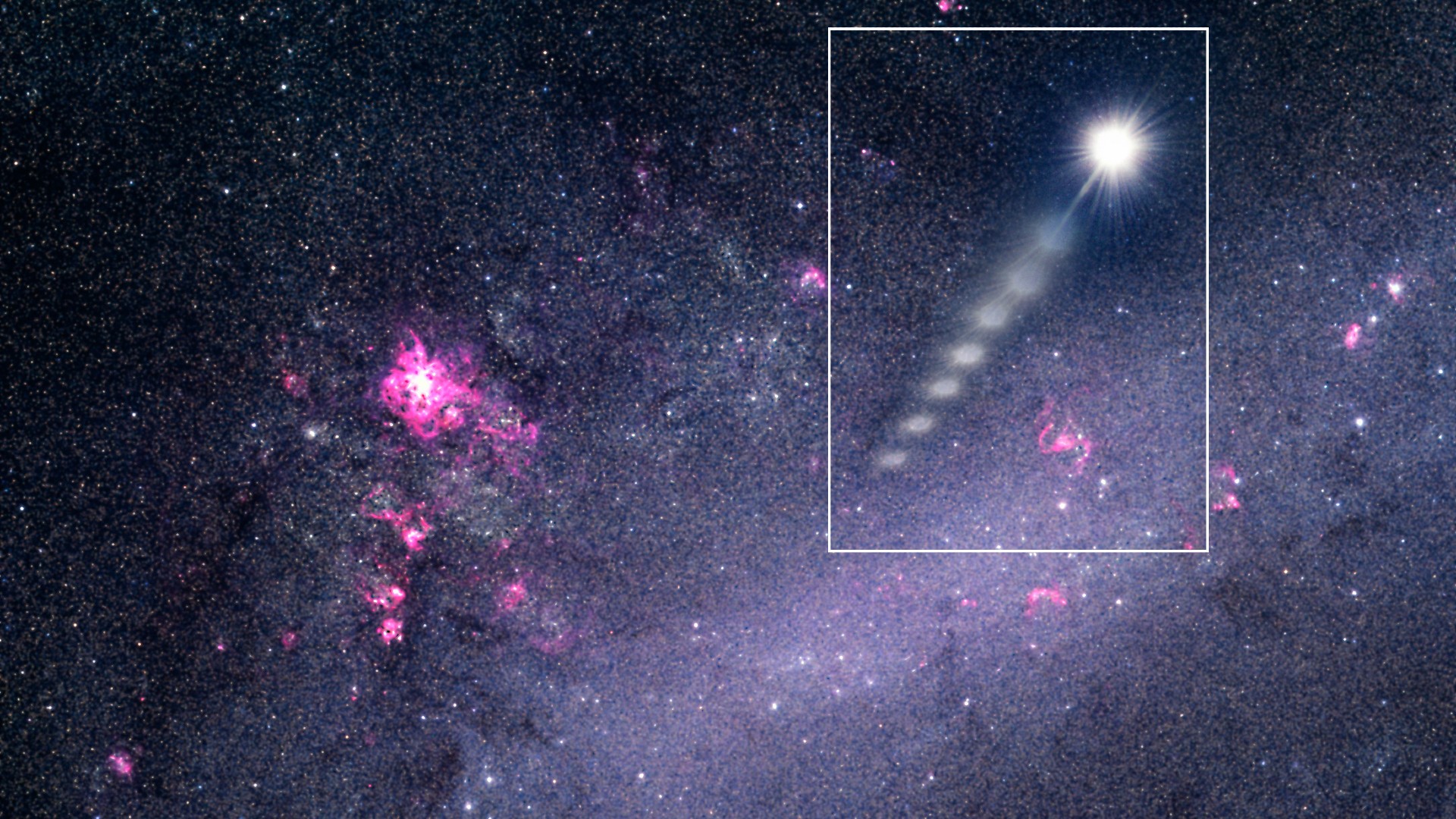Record breaker! New fastest star zooms through Milky Way at 5 million mph
DC Comics' Scarlet Speedster the Flash could have some cosmic competition in the form of six newly discovered runaway stars racing through the Milky Way.

Six new runaway stars were discovered racing through the Milky Way. Two of the super-speedster stars, designated J0927 and J1235, are moving faster than any object of this type ever seen.
According to new research, these record breaking stars are traveling at an incredible 5.1 million miles per hour (2,285 kilometers per second) and 3.8 million miles per hour (1,694 kilometers per second), respectively. J0927 has the fastest sun-orbiting velocity ever seen, making it capable of racing between New York and Mississippi in under a second, if it were a terrestrial object. At that speed, an object could race around Earth 694 times in just an hour.
The four other stars are no slouches in the speed department, either, all traveling at over 2.2 million miles per hour (1,000 kilometers per second). These hypervelocity stars are traveling through the Milky Way so rapidly that they have the velocity needed to escape the gravitational influence of our galaxy , also known as its escape velocity.
Related: Mystery solved? Runaway black hole chased by tail of stars may be galaxy in disguise
"These stars are extraordinary because they are traveling much faster than normal stars in the Milky Way. Because they're faster than the galactic escape velocity, they'll soon be launched into intergalactic space," team leader and Harvard/Smithsonian Center for Astrophysics researcher Kareem El-Badry told Space.com. "We were looking for objects like this, so we had some hope and expectation that they would exist, but their properties were different than we expected."
The team behind the discovery thinks that the incredible velocity of these four stars could be the result of them being launched by a particular type of cosmic explosion called a Type Ia supernova. This also gave them extraordinarily high surface temperatures, which El-Badry said surprised the team.
"They are also much hotter than normal stars — likely a result of their unusual formation history, which involves a supernova exploding right next to them!" the astrophysicist explained.
Breaking space news, the latest updates on rocket launches, skywatching events and more!
Type Ia supernovas occur in binary systems containing a stellar remnant called a white dwarf, which forms when stars like the sun die, feeding on material from a companion star.
White dwarfs — also called "degenerate stars" — are incredibly dense as a result of being created from the collapse of a stellar core with a mass around that of the sun squashed into an Earth-sized sphere, but they aren't massive enough to cross the so-called Chandrasekhar limit — the mass a star needs to trigger a "normal" supernova and create a neutron star or even a black hole when it dies.
When material from their donor star companion falls to the surface of a white dwarf, the stellar remnant gathers mass. This means this stellar material donation process can give a white dwarf the critical mass needed to push it over the Chandrasekhar limit, thus triggering a thermonuclear explosion called a Type Ia supernova.
Not only do these blasts constitute some of the brightest events in the universe, but they are so uniform that astronomers refer to them as "standard candles" as they can use them to measure cosmic distances.
While any supernova would release enough energy to create runaway stars, the team thinks it may take an even more violent and powerful supernova to accelerate these stars to hypervelocity status. These particular explosions are called "helium ignited violent mergers" or "dynamically driven double-degenerate double-detonations," with this mouthful of a moniker shortened to D⁶ supernovas.
D⁶ supernovas happen when white dwarfs strip helium rather than hydrogen from the outer layers of their companion star, which is believed to be another white dwarf (hence double degenerate). This results in a second massive explosion (hence double-detonation), with the companion white dwarf launched as a hypervelocity runaway star as a result.
"The composition of the runaway stars is very unusual," El Badry explained. "Almost all stars in the Milky Way have atmospheres made mostly of hydrogen and helium, but these objects have no hydrogen or helium at all and consist mostly of carbon and oxygen."
This suggests these runaway stars are degenerate white dwarf stars and further supports the idea that they were blasted to extreme velocities by a D⁶ supernova.
El-Badry and his colleagues used the standard light output of Type Ia standard candles to calculate the rate at which runaway stars are launched. They found the creation rate of hypervelocity stars was consistent with the rate at which Type Ia supernovas proceed, suggesting that many of these events could be D⁶ blasts.
This led them to conclude that there is a significantly large population of these superspeed stars racing through the universe that astronomers are yet to discover.
Though discovered within the Milky Way, these new runaway stars, all with velocities in excess of 2.2 million miles per hour (1000 kilometers per second), will one day exit our galaxy, which has an escape velocity of around 1.2 million miles per hour (550 kilometers per second). And the team thinks they won't be the first stars launched by the Milky Way.
"If a significant fraction of Type Ia supernovas produces a D6 star, the galaxy has likely launched more than 10 million of them into intergalactic space," El-Badry and his co-authors write.
Of course, turnabout is fair play, and just as our galaxy has blasted hypervelocity stars at its neighbors, the researchers led by El Badry think other galaxies have been blasting super-speed stars at us. They say this implies there should be a large number of faint runaway stars launched from galaxies in the Milky Way's local grouping hurtling through our galaxy in the vicinity of the solar system.
The research is described in a paper that has been submitted for publication in the journal Open Journal of Astrophysics and is currently published on the paper repository arXiv.

Robert Lea is a science journalist in the U.K. whose articles have been published in Physics World, New Scientist, Astronomy Magazine, All About Space, Newsweek and ZME Science. He also writes about science communication for Elsevier and the European Journal of Physics. Rob holds a bachelor of science degree in physics and astronomy from the U.K.’s Open University. Follow him on Twitter @sciencef1rst.

